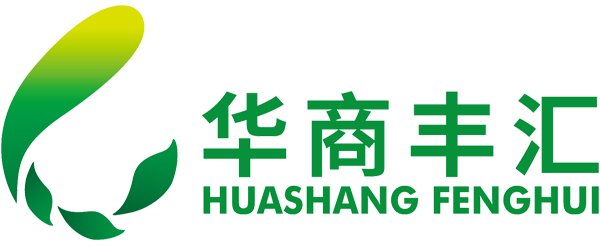What are the Vietnam port codes?
Keywords: Vietnam ports, how many ports are there in Vietnam, what are the international ports in Vietnam, what are the main ports in Vietnam, which is the largest port in Vietnam, how many piers are in Haiphong port, map of Vietnam ports, important ports in Vietnam, how many in Ho Chi Minh City Port, Vietnam port code, which ports are there in Vietnam.
Vietnam has 50 ports, the total length of waterways in Vietnam is 11,000 kilometers, inland water transportation has 854 tugboats, 28470 cargo ships, 1355 barges, and the transportation capacity is about 1.63 million tons. There are 610 cargo ships, 6 barges, and a transport capacity of 840,000 tons. The eight major ports under the direct jurisdiction of the Ministry of Communications are Quang Ninh, Haiphong, Lumen, Quy Nhon, Nghe An, Nha Trang, Da Nang and Saigon Port. In 2005, passenger traffic was 171 million people and freight traffic was 62.98 million tons. Among the important international cargo ports are Haiphong City and Ho Chi Minh City.
The two main ports are: Haiphong Port (duHAIPHONG) and Ho Chi Minh Port (HOCHIMINH), of which Ho Chi Minh is now divided into: Ho Chi Minh International Port (HOCHIMINH VICT), Ho Chi Minh Telai Port (HOCHIMINH CAT LAI), Ho Chi Minh New Port (HOCHIMINH NEW PORT).
The remaining ports:
Cua Cam Port (VNCCA) Frontier Port (VNBTI) Nam Dinh Port (VNNMD) Benyi Port (VNBNE)
Da Nang (VNDAD) Hanoi Port (VNHAN) Ho Chi Minh City Port (VNSGN) Kam Pu Port (VNCPH)
Hon Gai Port (VNHON) Bakay Port (VNBNO) Dong Thap Port (VNDTH) Lao Cai Port (VNLCA)
Nha Trang City Port (VNNHA) Umi Port (VNPHU) Kam Pu Port (VNPCA) Quang Ninh Port (VNQNH)
Vat Cach Port (VNVCH) Hue Port (VNHUI) Broad Port (VNKYN) My Fu Port (VNMUT)
Redong Port (VNPRE) Qui Nhon Port (VNUIH) Vinh Port (VNVNH) Vung Tau Port (VNVUT)
Buon Ma Thuot Port (VNTHQ) Pleiku Port (VNKUG) Thai Nguyen Port (VNTNG) Haiphong Port (VNHPH)
Terminal Port (VNTCG) Saigon Port (VNSIT) Port Thai (VNCLI) Ho Chi Minh Port (VNVIC)
Fulong Port (VNPHG) Qinghui Port (VNKHI) Changping Port (VNLBN) Xinshun East Port (VNTTD)
Bien Hoa Port (VNBHA) Binh Duong Port (VNBDU) SOTRANS Port (VNSTR)
Tana Mock Port (VNTAM) PHUC LONG Port (VNPLG) Transimex Port (VNITX)
Longbin Port (VNLBN) Cailan Port (VNCLN) Bangson Port (VNBSE) Guangbai County Port (VNQBH)
East China Sea Port (VNDN3) Song Than Port (VNSTC) Ho Chi Minh New Port (VNTCG)
The most important ports in Vietnam
1. Haiphong Port (duHAIPHONG)
Haiphong Port is located in northern Vietnam in Southeast Asia. It is an important gateway and transit station for Hanoi and the most important port in the north. Located on the lower reaches of the Jingtai River on the northeastern coast of Vietnam, on the northeast side of the Red River Delta, and on the northwest bank of the BEI BU Bay, it is the largest seaport in northern Vietnam. It is the maritime gateway of the capital Hanoi (HANOI) and a transfer station for import and export materials in the north. The main industries include machinery, shipbuilding, textiles, cement, glass, chemicals, enamel and canning.
There are 20 main berths in the port area, including ore, coal, grain, container and other terminals, with a maximum water depth of about 9m. The loading and unloading equipment includes various shore cranes, floating cranes and tugs, among which the maximum lifting capacity of the floating crane is 200 tons, and the maximum tug power is 441kW. The dock is reliable for 10,000-ton ships, and large ocean-going ships are loaded and unloaded at the northern anchorage. In 1994, the container throughput reached 90,000 TEU, and the annual cargo handling capacity reached 5 million tons. The main export goods are iron, coal, rice, corn, cement, ferrous and non-ferrous metal ore, and the main imported goods are machinery and textiles.
2. Ho Chi Minh International Port (HOCHIMINH)
Hochiminh is located on the west bank of the lower reaches of the Saigon River in southern Vietnam, about 46n mile away from the mouth of the river. HOCHIMINH, formerly known as SAIGON, was changed to its current name in 1975 and is the largest port in Vietnam. HOCHIMINH is the largest city and transportation hub in Vietnam, as well as the distribution center for rice in the Mekong delta. Ho Chi Minh (HOCHIMINH) is also the industrial center of Vietnam. Its main industries include machinery, shipbuilding, rice milling, cement, sugar making, wine making, textiles, cigarettes, chemicals, bricks and tiles, sawmills, rubber and ceramics.
Ho Chi Minh Port (HOCHIMINH), also known as Saigon Port, is located in the northeast of the Mekong Delta in southern Vietnam. It is the largest port in southern Vietnam. Ocean-going vessels with 10,000 tons can enter the port for loading and unloading. Ho Chi Minh Port currently has three terminals, namely: NEW PORT (New Port), CAT LAI PORT (Thailand Port), and VICT PORT (Vietnam International Container Terminal). Among them, CAT LAT and VICT are the old ports, and NEW PORT is the new port. Generally, the ocean freight to the old port is lower than that to the new port, and there are more shipping companies, but sometimes the port will be crowded.
There are 15 main berths in the HOCHIMINH port area with a coastline of 2000m and a maximum water depth of 11m. The loading and unloading equipment includes various shore cranes, tugs and barges, among which the maximum lifting capacity of the shore crane is 100 tons, and the maximum tug power is 1912kW. The oil terminal is a reliable oil tanker of 45,000 dwt. The container terminal can store more than 1,000 containers, and there are more than 10 mooring floats that can berth 10,000-ton ships. The water depth of the large ship anchorage reaches 13m. In 1949, the container throughput reached 280,000 TEU, an increase of 48.5% over 1993. Hochiminh (HOCHIMINH) mainly exports rubber, tea, rice, coal, mineral products and agricultural and sideline products. Imported goods mainly include steel, grain, mechanical and electrical equipment, petroleum products, fuel, cotton and chemical products.
3. Da Nang Port (VNDAD)
Vietnam military port and commercial port. It is located in the Danang Bay in the central part of the country, to the northeast of the port city, facing the South China Sea. 143 nautical miles from Donghai Port in the northwest, 236 nautical miles from Bianshui Port, 310 nautical miles from Haiphong Port in the north, 329 nautical miles from the North Sea Port of China, 178 nautical miles from Basuo (Dongfang) Port on Hainan Island, China, and 185 nautical miles from Guiren Port in the southeast. Nha Trang Port is 279 nautical miles, 1037 nautical miles from Singapore Port in the southwest, and 509 nautical miles from Hong Kong in the northeast. There is an airport nearby. Danang is horseshoe-shaped, formed by a recessed land bank, a headland in the east of the west and an island-shaped Camellia peninsula on the east. It is about 8 nautical miles from the north to the south and 6 nautical miles from the east to the west. The mouth of the bay faces the northeast, only about 3.5 nautical miles. The waters in the bay are wide and hidden, and can accommodate all kinds of ships. It can be described as a natural harbor. The southeast of the bay has the Hanjiang River flowing into the bay from the north. The main piers of the port are: the harbour pier, located at the western end of the Camellia Peninsula on the east coast of the bay. There are several arm-shaped jetties, one of which has a pier line of 250 meters, and the front water depth is 9.1 meters below the base of the chart. The others are still under construction. The Hanjiangkou Wharf is said to have a total length of 2235 meters, but the water depth is only 4.7 meters. Most of it is concentrated on the west bank, mainly for military use, and only 350 meters for commercial use. There are 3 floating berths for oil tankers in Da Nang Bay. 2 of them are docked with a water depth of only 6.0-6.2 meters. The other is close to the center of the bay and has a water depth of 11 meters. There are oil pipelines connecting land and shore. The MY KHE offshore oil berth is located off the east coast of the Han River, protected by the Camellia Peninsula, with a water depth of 13 meters. There was no bulk cargo terminal or container handling equipment in Hong Kong until the mid-1980s, but there was a ro-ro slope. Da Nang, also known as TOURANE, is the capital of Quang Nam and Da Nang Province.
4. Hongay Port (Hongay)
Hongay Port (Hongay) is located in the southeast of CUA LUC (CUA LUC) in the north of Namchen Halong Bay in Quang Ninh Province in northeastern Vietnam, on the northwest side of the North (BEI BU) Bay, and is an important coal export port in northern Vietnam. The nearby Hongji Coalfield is one of the largest coalfields in Southeast Asia.
It is 24 nautical miles from Jinpu Port in the east, 51 nautical miles from Haiphong Port in the west, 303 nautical miles from Da Nang in the south, and 140 nautical miles from my country's North Sea Port in the northeast. The tide of the port is of the all-day type, with an average tide height of 3.06 meters and a low tide height of 1.6 meters. There are two trading terminals in the port, the north terminal is 100 meters long, and the front water depth is 4-8.6 meters; the south terminal is 90 meters long, and each terminal has two cranes. In addition, there is a "T"-shaped jetty in the south. The top of the jetty stretches to the south. It is about 90 meters long and has a water depth of 6 meters. It exports coal to the Hongji Coal Mine in Vietnam. The high-quality anthracite coal mine produced by Hongji Coal Mine is more than 100 kilometers long, 15-20 kilometers wide, and has reserves of more than 2 billion tons. The topsoil is thin, which is good for open-pit mining. It is the largest coal mine in Vietnam and Indochina. There are scheduled routes to Jinpu and Haiphong. Hon Gai Port in Vietnam is the same thing as Ha Long City in Vietnam. The dock area in the north is called Hon Gai Port, and the living area in the south is called Ha Long City.
The above is the introduction of Vietnam ports and Vietnam port codes. If your company has a large amount of goods that need to be exported to Southeast Asia, Vietnam and other countries, welcome to discuss cooperation with our company. We are a professional 16-year international sea, land and air double clearing expert. Agency, first-hand price, 24-hour hotline: 135-9035-1376, Manager Huang.




